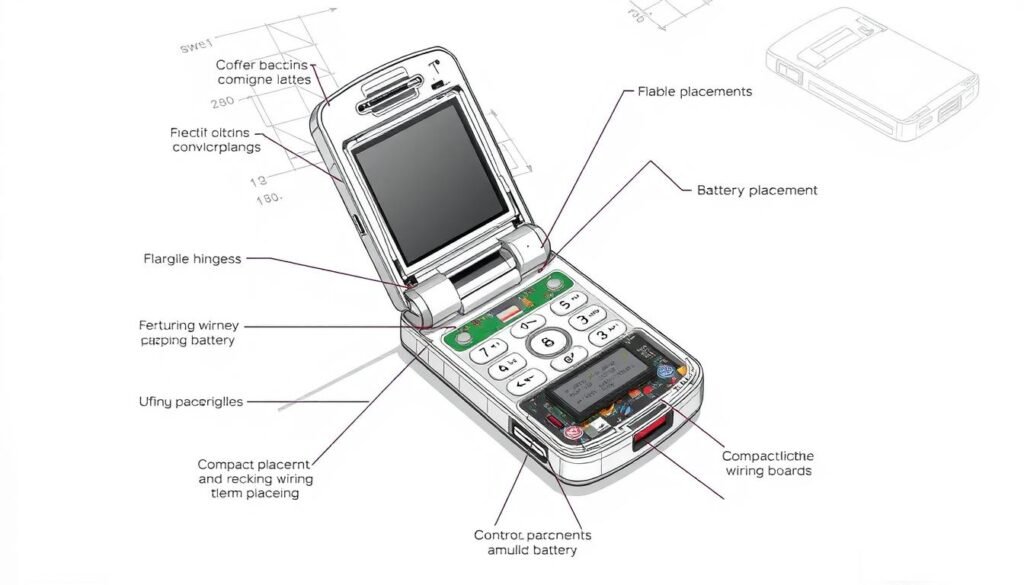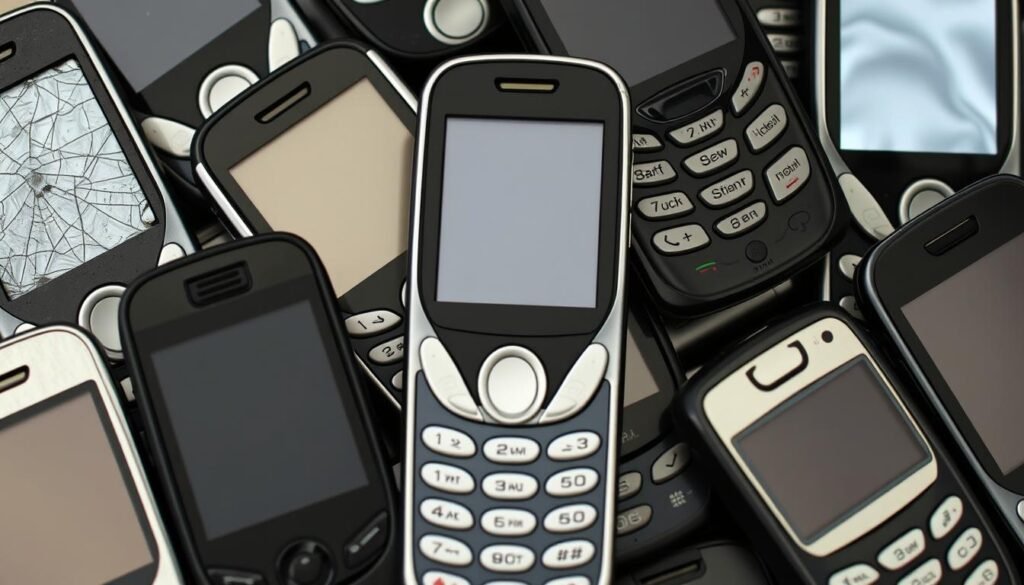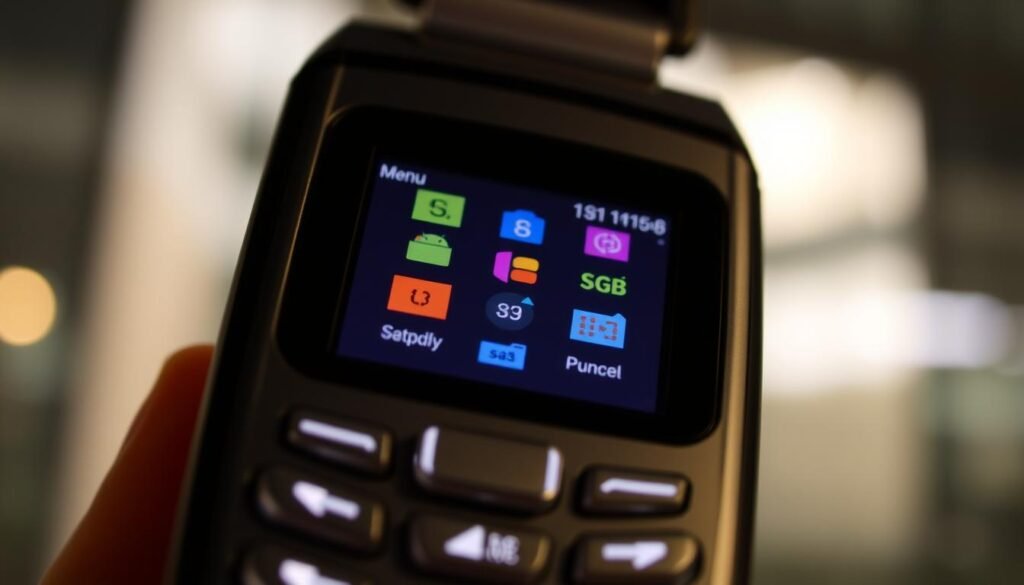News
What are the technical difficulties of flip phones?
Flip cell phones are back in style, thanks to their unique look and function. They stand out in a world full of smartphones. But, they come with their own set of technical problems that can affect how well they work.
These phones are known for being easy to use and small. Yet, their small screens and low resolution can make them less effective. We’ll look at the issues users might face, from battery life to software problems, all because of modern tech.

For those thinking about getting a flip phone, it’s important to know about their technical hurdles. With today’s tech, flip phones face a tough competition. This article will dive into the problems these phones have, like their limitations and downsides, to help you understand them better.
Key Takeaways
- Flip cell phones pose several technical challenges that can impact user experience.
- Technical difficulties, such as limited screen size and resolution, can hinder performance.
- Battery life and charging issues are common problems with flip cell phones.
- Software and connectivity challenges can arise due to outdated technology.
- Understanding the technical difficulties of flip cell phones is crucial for making an informed decision about their use.
- Modern technology has raised the bar for flip cell phones, making their technical challenges more pronounced.
- Flip cell phones must navigate technical difficulties to remain relevant in a world dominated by smartphones and modern technology.
Understanding Modern Flip Cell Phone Technology
The comeback of modern flip phones is a big deal in mobile tech. These phones mix the old-school look of classic flips with today’s technology advancements. They give users a different option from regular smartphones.
Today’s flip phones have touchscreens, Bluetooth, and basic internet. They’re great for those who want simplicity but still need important features. In a smartphone comparison, flip phones win for being tough and lasting longer on battery.
They’re small and easy to carry, unlike big smartphones. The flip design feels good to use. But, they have smaller screens and fewer apps.
People who like simple phones, seniors, and those wanting less screen time are fans of modern flip phones. Even with smartphones being popular, many still choose flip phones for their dependability and simple design.
In short, modern flip phones are a mix of old and new. They meet the needs of a specific but loyal group of users. Their presence in the market shows how varied people’s preferences for mobile devices are.
Common Technical Difficulties with Flip Cell Phones
Flip phones have their charm, but they come with several technical challenges that users often encounter.

Screen Size and Resolution Limitations
The screens on flip phones are smaller and have lower resolution than modern smartphones. This makes it less fun to watch videos and use apps.
Battery Life and Charging Issues
Flip phones might last longer when not in use, but their battery doesn’t last long when you’re using them. Also, the charging ports can break easily, causing problems when you try to charge your phone.
Durability and Mechanical Failures
Durability is a big problem, especially with the hinge. Opening and closing it a lot can make it wear out. The phone’s build quality might not be strong enough, leading to mechanical failures.
| Technical Difficulty | Description | Impact |
|---|---|---|
| Screen Size and Resolution | Smaller screens with lower resolution limit user experience | Reduced readability and app functionality |
| Battery Life | Long standby but limited usage time for features | Frequent recharging needed during active use |
| Durability Issues | Hinge and build quality prone to wear and mechanical failures | Shorter device lifespan and potential for costly repairs |
Software and Connectivity Challenges
Using a flip phone today comes with several software and connectivity hurdles. The flip phone software is often limited compared to smartphones, affecting what users can do with their devices.
App Compatibility Problems
Flip phones typically run on basic operating systems that don’t support most modern apps. This means users miss out on popular applications for social media, productivity, and entertainment, limiting the phone’s functionality.
Internet Browsing Limitations
Browsing the internet on a flip phone can be frustrating. The internet capabilities are basic, making it difficult to load complex websites or use features like video streaming. This can hinder users who rely on mobile internet for information and communication.
Network Technology Constraints
Many flip phones struggle with newer network technologies. Limited support for 4G or 5G networks results in slower data speeds and less reliable connections. This impacts everything from downloading content to maintaining stable calls.
User Interface and Input Challenges
Using a flip phone is different from today’s smartphones. Many find it less intuitive and takes more time.

Text Input Difficulties
Typing on a physical keypad is slower than on touchscreens. Predictive text is limited, making messages harder to write fast.
Navigation Complexities
Getting through menus and apps is hard. Directional keys or small joysticks need precise inputs. This can cause frustration.
Media Management Issues
Handling photos, videos, and music on a flip phone is tough. Limited storage and disorganized libraries make it hard to find and organize files.
The Impact of Technical Limitations on Daily Use
Flip phones have big limitations that affect how we use them every day. Simple tasks like finding a new place become hard without apps like Google Maps. Traveling becomes less easy because of this.
Using social media is also tough on flip phones. It’s hard to keep up with friends and family on platforms like Facebook and Instagram. This can make people feel left out.
Video calls are hard to do because of the phone’s tech. Without a camera or enough power, talking face-to-face online is not possible. This affects both personal and work talks.
But, people find ways to work around these problems. They use texts or basic web browsers for what they need online. This helps them stay connected despite the phone’s limits.
- Using SMS and MMS for talking instead of social media.
- Choosing basic GPS over advanced apps for directions.
- Going for voice calls instead of video calls for talking.
| Daily Activity | Challenge | Adaptation |
|---|---|---|
| Navigation | Limited access to advanced navigation apps | Using basic GPS services or pre-downloaded maps |
| Social Media | Difficulty accessing platforms like Facebook or Instagram | Communicating via SMS or using web-based social media features |
| Video Calls | Inability to participate in video conferencing | Opting for voice calls or text messaging |
Conclusion: The Future of Flip Phones in a Smartphone World
Flip phones have faced many challenges, like small screens and short battery life. Yet, they still have a special spot in today’s mobile world. They are perfect for those who want something simple and tough.
The future of flip phones looks bright. Makers are working on making them last longer and use less power. They’re looking into new materials and tech to fix old problems. Better screens could also make them more enjoyable to use without losing their small size.
Flip phones are for people who don’t need all the fancy stuff. They love how long they last, how easy they are to use, and how strong they are. As tech gets better, flip phones might get smarter too, but they’ll still be simple.
In a world full of smartphones, flip phones offer a nice change. They’re all about keeping things simple and reliable. Whether they’ll become more popular again, only time will tell. But for now, they’re a great choice for certain users.
FAQ
What are the main technical challenges of using modern flip cell phones?
Modern flip cell phones face screen size and resolution limitations. This can affect how well they work. They also have battery life issues and durability concerns because of their mechanical hinges.
How do flip phones compare to smartphones in terms of battery performance?
Flip phones usually last longer when not in use. But, they don’t last as long when using advanced features. This can be a problem for those who need their phones for a lot of tasks.
Are there any software compatibility issues with modern flip phones?
Yes, flip phones struggle with app compatibility. Their operating systems are not as advanced as smartphones. This limits access to many apps and features that users expect today.
What connectivity constraints do flip phones face in today’s network environment?
Flip phones have network technology constraints. They often don’t support newer networks like 5G. This makes it hard to get fast data speeds and stay connected in today’s digital world.
How does the user interface of flip phones impact daily usage?
The flip phone interface can be hard to use. It’s tough to type on physical keypads and navigate menus. This makes using flip phones less intuitive than smartphones.
What are the durability issues commonly associated with flip cell phones?
Durability is a big problem for flip phones. The hinge can break easily from frequent use. They also may not last as long as smartphones, especially with heavy use.
Can flip phones effectively manage media like photos and music?
Managing media on flip phones is hard. They have limited storage capacity and it’s hard to organize files. This makes it tough to store and access lots of photos, videos, and music.
Why do some consumers still prefer flip phones despite their technical limitations?
Some like flip phones for their classic look and simplicity. They also offer better battery longevity and a simpler user experience. This appeals to those who want less complexity in their phones.
How do flip phones handle internet browsing compared to smartphones?
Internet browsing on flip phones is limited. They have basic browsers and lower internet capabilities. This makes it hard to access modern websites and multimedia content, which smartphones handle better.
What advancements could improve the functionality of future flip cell phones?
Future flip phones could get better screens, batteries, and materials. They could also have better software to solve app compatibility and navigation issues. These improvements would make flip phones more functional.
